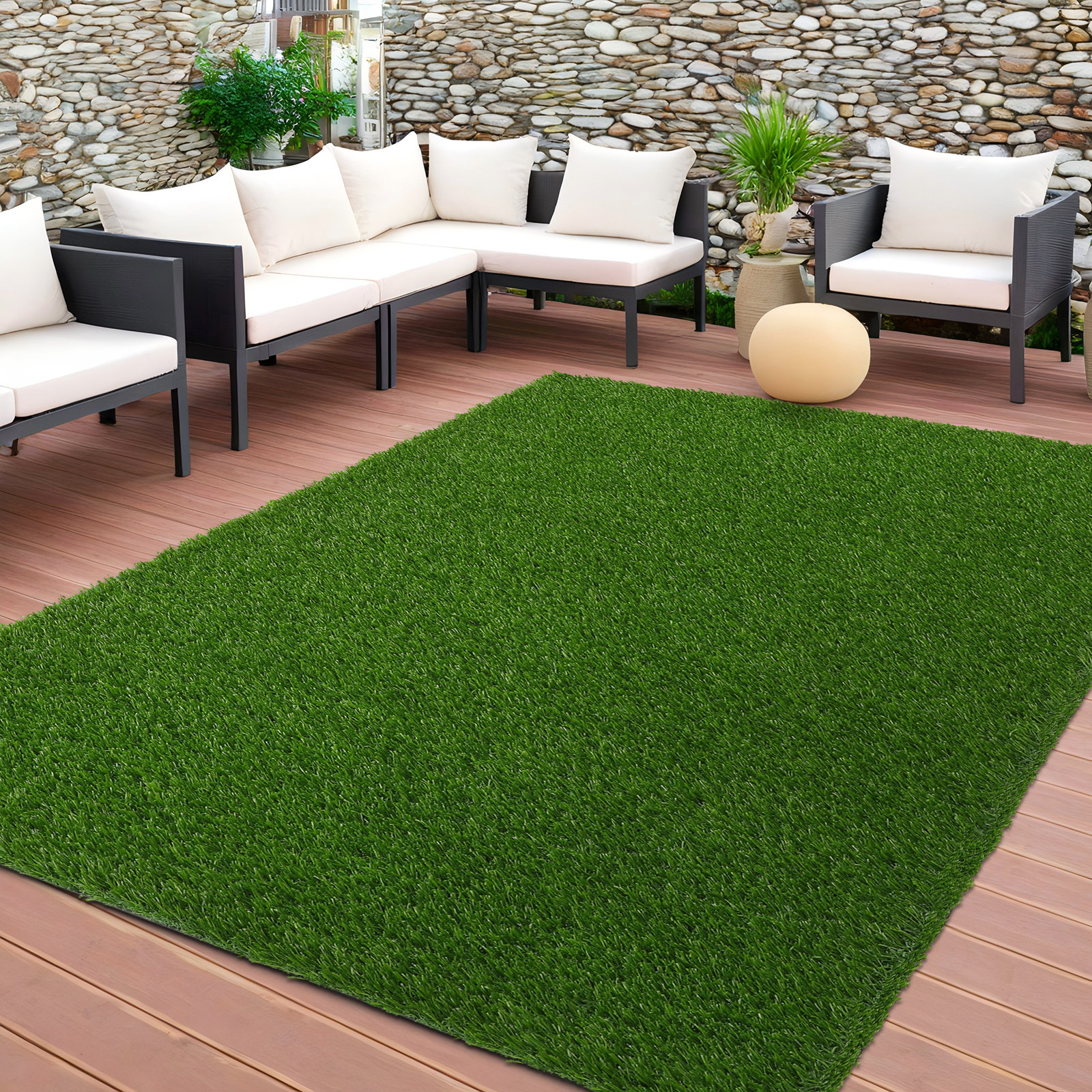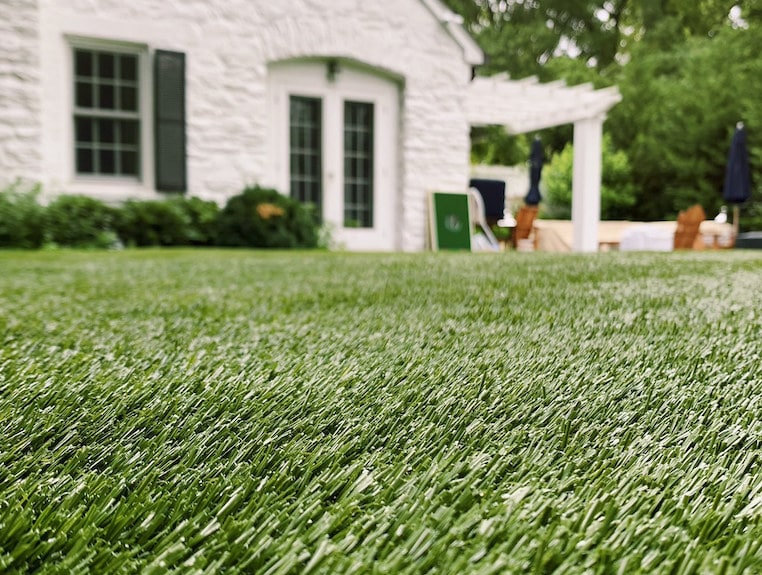Highly-Ranked Phoenix Turf Companies Focusing on Synthetic Grass Solutions
Highly-Ranked Phoenix Turf Companies Focusing on Synthetic Grass Solutions
Blog Article
See Why Homeowners Prefer Artificial Lawn for Lasting Landscape Design Practices
As homeowners progressively prioritize sustainability in landscaping, synthetic grass has actually become a compelling choice to conventional lawn. Its ability to conserve water, lower upkeep initiatives, and minimize ecological effect placements it as a sensible selection for those seeking eco-friendly options. In addition, the visual appeal and versatility of synthetic grass provide to diverse layout preferences. However, the effects of this shift extend past mere convenience and looks, motivating a more detailed evaluation of how these options influence broader ecological end results. What stays to be checked out is the complete extent of advantages that synthetic grass can supply to home owners and the environment alike.
Water Preservation Perks
One of one of the most substantial benefits of synthetic grass is its role in water preservation. Standard turf yards require significant amounts of water to preserve their rich appearance, typically bring about overuse of local water sources, specifically in deserts. In contrast, synthetic turf eliminates this demand totally, as it does not call for irrigation. This not only preserves water however also reduces the stress on metropolitan water supply, particularly throughout dry spell conditions.
In addition, the setup of fabricated grass can add to an extra lasting landscape. Property owners can considerably reduce their water bills, enabling reallocation of resources to other environmental efforts or home usages. Additionally, artificial lawn is made to endure numerous climatic conditions without the need for additional watering, making it an ideal choice for regions dealing with water shortage.
The environmental benefits expand past prompt water cost savings. By decreasing water usage, synthetic grass aids to mitigate the influences of climate adjustment, preserving important ecosystems that are endangered by extreme water extraction. As lasting landscape design practices obtain traction, synthetic grass emerges as an accountable choice for homeowners seeking to produce eco-friendly exterior areas.
Decreased Upkeep Efforts
Fabricated turf considerably lowers upkeep efforts compared to conventional yard yards. With man-made yard, property owners can get rid of the lengthy tasks related to all-natural landscaping, such as mowing, fertilizing, and weeding. This not just conserves valuable time however likewise minimizes physical labor, making grass treatment obtainable for individuals of all ages.
Typical lawns need constant cutting to keep an aesthetically pleasing elevation, whereas man-made grass stays regularly lavish without the requirement for cutting. Furthermore, home owners no longer need to apply pesticides or plant foods, which are typically required to keep natural turf healthy and balanced.
In addition, synthetic grass is resilient and sturdy, needing marginal upkeep past occasional cleaning and washing to remove particles. This simplicity of upkeep enables homeowners to appreciate their exterior spaces without the continuous fear of maintenance, providing even more time for leisure and household tasks. Inevitably, the decreased upkeep initiatives connected with synthetic grass make it an appealing choice for those looking for a low-maintenance, visually appealing landscape.

Environmental Impact Decrease
There is an expanding recognition of the environmental advantages connected with fabricated turf, specifically in terms of water preservation and minimized chemical use. Standard grass call for considerable quantities of water, particularly in drought-prone areas, resulting in increased stress on local water sources. On the other hand, synthetic grass eliminates the need for irrigation, drastically decreasing water intake and promoting sustainability.
In addition, traditional yard upkeep usually involves the application of pesticides, fertilizers, and herbicides, which can add to soil and water contamination. Synthetic grass alleviates this environmental threat by calling for marginal maintenance and virtually removing the requirement for damaging chemicals. This not pop over to this site only boosts soil health however likewise protects neighborhood environments from toxic overflow.
In addition, the manufacturing of all-natural yard lawns typically entails making use of nonrenewable fuel sources for cutting and landscape design tools, more contributing to greenhouse gas exhausts. By selecting synthetic grass, property owners can dramatically lower their carbon impact related to yard treatment tasks.
Visual Allure and Flexibility
Along with its ecological advantages, synthetic grass uses substantial visual allure and flexibility for landscape design. House owners can attain a rich, green appearance year-round, removing the seasonal variations frequently related to all-natural turf. This consistent visual not only boosts the visual appeal of a home but also contributes to a polished and properly maintained appearance.
Moreover, synthetic grass is offered in a range of designs, structures, and colors, permitting for modification to match specific choices and design themes - Phoenix turf companies. Whether made use of in residential gardens, commercial spaces, or entertainment locations, it can perfectly integrate into diverse landscaping layouts, from modern-day minimal to rich exotic settings
The adaptability of synthetic grass extends past mere look; it can be installed in various places, consisting of roofs, patio areas, and also interior rooms, producing chances for distinct landscaping services. Furthermore, it is appropriate for a series of tasks, from kids's backyard to pet-friendly settings, offering capability without jeopardizing design.
Inevitably, the aesthetic charm and flexibility of fabricated turf make it an eye-catching alternative for house owners seeking lasting landscaping services that do not compromise beauty for ecological responsibility.

Long-Term Expense Savings
One of one of the most compelling advantages of synthetic grass is its capacity for lasting expense websites savings. Unlike all-natural grass, which calls for regular maintenance-- consisting of mowing, watering, fertilizing, and pest control-- man-made turf considerably minimizes these continuous costs. House owners can conserve a significant amount on water expenses, particularly in regions where water shortage is a pushing problem. The removal of grass care services further adds to economic cost savings, as there is no need for specific equipment or labor.
Furthermore, synthetic grass has a lifespan of 15 to 25 years, depending on its high quality and use. This longevity lessens substitute prices, making it a much more affordable selection over time. The initial financial investment in man-made lawn can frequently be recouped via the savings accrued over time.
While the upfront price may appear higher compared to sod click to find out more setup, the cumulative savings from decreased upkeep and water usage typically surpass these preliminary expenses. Ultimately, the fostering of synthetic grass not only promotes a lasting landscape design remedy yet likewise provides home owners a monetarily savvy choice that straightens with long-lasting budgeting goals.
Verdict
Man-made lawn arises as a compelling option for lasting landscaping, using significant advantages in water preservation, reduced maintenance efforts, and reduced ecological impact. As areas progressively prioritize environmentally friendly techniques, the fostering of artificial turf represents a progressive action toward attaining durable and sustainable landscapes.
Additionally, synthetic lawn is made to endure various weather conditions without the demand for extra watering, making it an excellent choice for areas encountering water scarcity. (Artificial turf companies phoenix)

Man-made turf emerges as a compelling choice for lasting landscaping, supplying significant benefits in water conservation, lowered maintenance initiatives, and reduced environmental influence.
Report this page